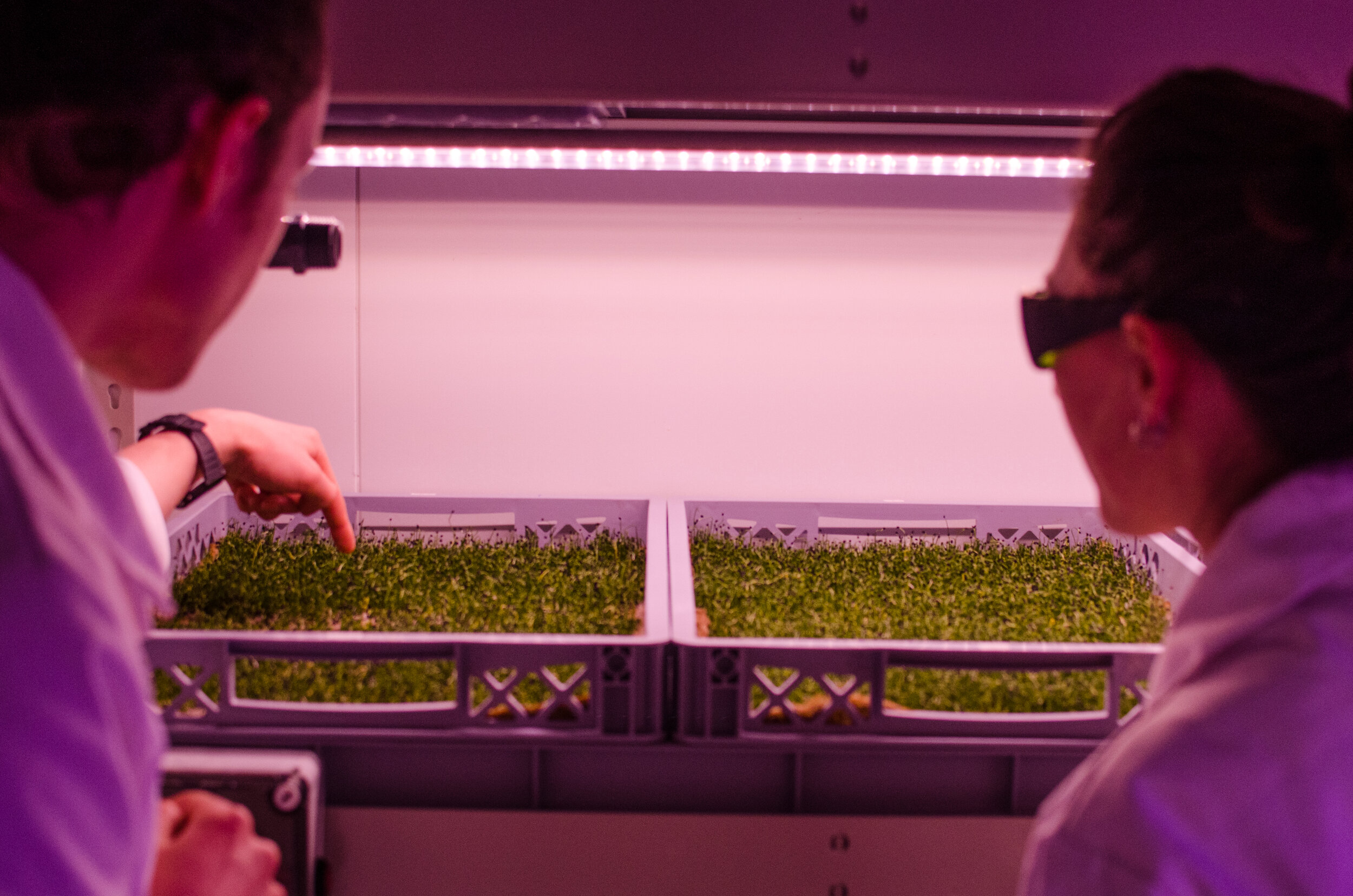What is indoor farming?
What is indoor farming?
An indoor farm does what it says on the tin: grows plants inside. Most people are familiar with greenhouses, this is indoor farming at its simplest: plants grown inside using sunlight, soil and water. There are lots of other types of indoor farms too including vertical, aquaponic, hydroponic and aeroponic.
In this blog, we will have a look at each of these types of farms, the differences between them and why they’re important.
Greenhouse
A greenhouse, sometimes called a glasshouse, is a building made from predominantly transparent material that’s used to offer protection when growing tender or out-of-season crops. Industrial greenhouses, the kind used to produce the food you find on supermarket shelves, differ greatly from those you find in back gardens and allotments up and down the country. For a start, they’re much larger, spanning acres rather than meters, and are typically home to high-tech precision farming technology. At optimal growing conditions, each acre in the greenhouse yields as much lettuce as 10 outdoor acres and cuts the need for chemicals by 97% but can’t always be used year-round.
It would be hard to find a place more enthusiastic about greenhouse farming than the Netherlands. In the southern region of Westland, greenhouses cover 80% of cultivated land. These high output measures began almost twenty years ago when the Netherlands made a national commitment to sustainable agriculture with the goal of producing twice as much food using half as many resources.
Vertical farm
Vertical farming is a way of minimising the physical footprint of a farm by stacking plants on shelves. Because of this, plants are typically grown in trays on a growing medium (hemp, fabric, coconut fibers, etc.) instead of in the ground. Instead of coming from the sun, like in a greenhouse, electric lighting provides the light for photosynthesis, typically using LEDs. Nutrients that would usually be found in the soil are delivered through water either as a liquid (in aquaponics and hydroponics) or as a mist (in aeroponics).
Because you don’t need sunlight, rain or fertile land, vertical farms are often associated with urban agriculture, but this does not have to be the case. It can be a useful tool in rural areas too, for example in crop propagation or farm diversification. Vertical farms can be used to extend the growing season for farmers. Because you are not dependent on the weather outside, you can harvest crops all year round, 365 days a year.
Hydroponic
Hydroponics is a method of growing plants without soil. Instead, the plant’s roots hang down into a nutrient-rich water. Plants grown hydroponically have been shown to grow 25-30% faster than those grown in soil. Hydroponics can be used in both greenhouses, making use of sunlight, or in vertical farms, under LED lighting.
Aeroponic
Aeroponics is similar to hydroponics but instead of the roots hanging down into a nutrient solution, they hang down into a nutrient-dense mist. Because the roots are not underwater, they have better access to oxygen and carbon dioxide. This has been shown to result in a 70% increase in growth rate compared to hydroponics, which is faster than field growing.
Aquaponic
Aquaponics is, in essence, a form of hydroponics but instead of dissolving nutrients in water, you use the wastewater from aquaculture. Excretions from aquatic animals accumulate in the water. This effluent-rich water is then fed into a hydroponic system where the by-products are broken down into nitrates that are then absorbed by the plants as nutrients. The cleaned water is then recirculated back to the aquaculture system.
Resource distribution
From childhood, we’ve been taught that plants need three things to grow: sunlight, water and soil. Unfortunately, sometimes these can be in short supply. Some places like Tromsø, Norway, have extreme light variation over the year. From November to January the sun doesn’t rise at all (this is called polar night) and anyone living in the UK can attest that we are not exactly oversupplied with sunshine either. Freshwater scarcity affects 4 billion people (two-thirds of the global population) for at least 1 month of the year and it affects half a billion people all year round. Finally, we’re losing soil at a rate of 24 billion tonnes a year. Generating just three centimeters of topsoil takes 1,000 years. According to a UN report, if we continue to lose soil at this rate we could run out well before the end of the century.
What does this have to do with indoor farming?
Humanity must increase food production by 70% to feed nearly 10 billion people by 2050. We must achieve this with 25% less farmland, degraded soils and in an ever more unpredictable climate. Our existing methods of agriculture will not be enough to feed ourselves. Additionally, the majority of our ‘fresh’ produce is imported out of season, often traveling hundreds of miles to reach our plates. Lengthy supply chains result in a colossal environmental impact.
Many of these issues can be addressed by establishing localised, high-output indoor farms in and around cities. These indoor farms allow a country to improve its food security by providing a portion of its food without being dependent on favourable climatic conditions or imports. By situating these farms close to the consumer, they will be able to reduce food miles and food waste significantly - thus reducing the associated carbon emissions.

